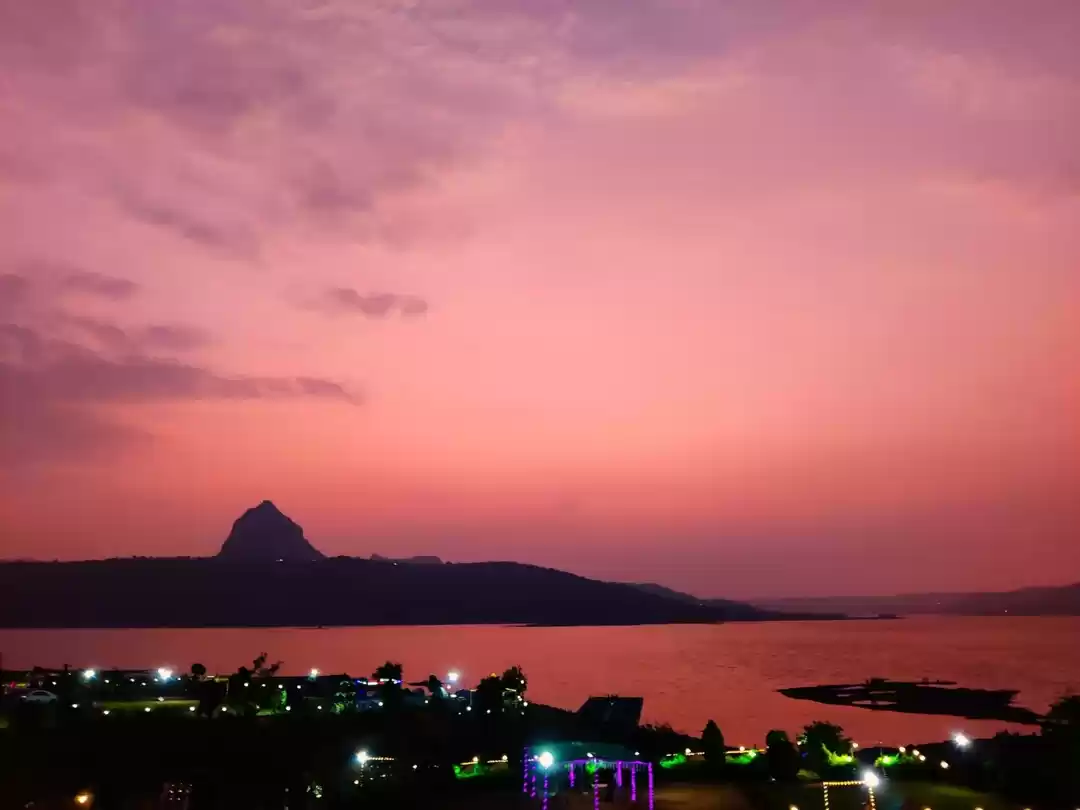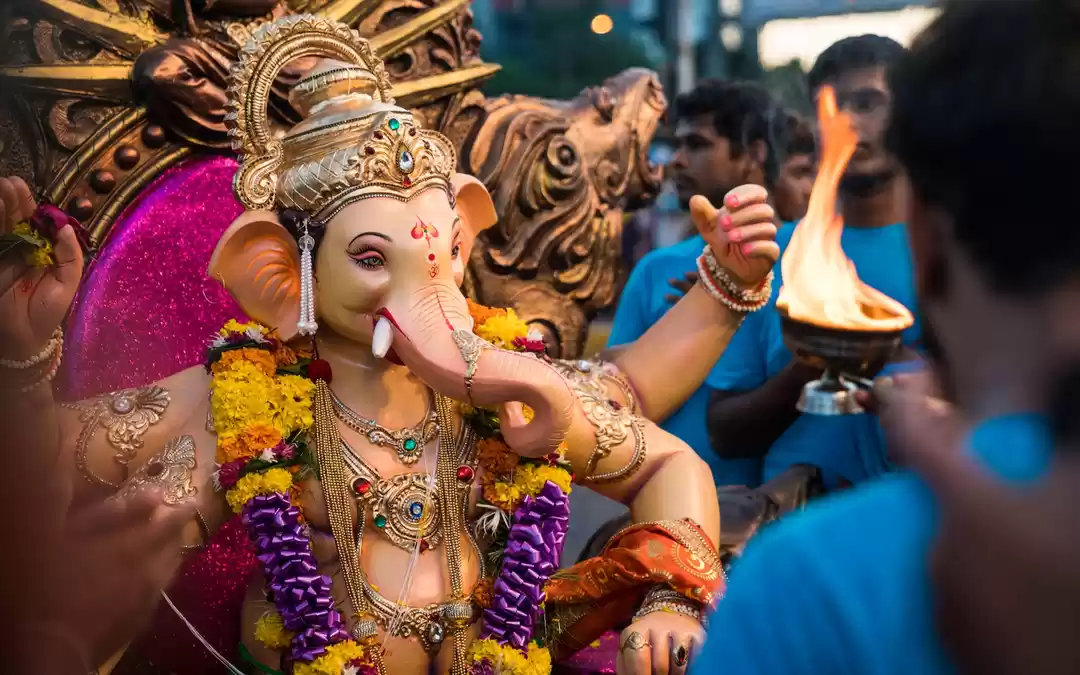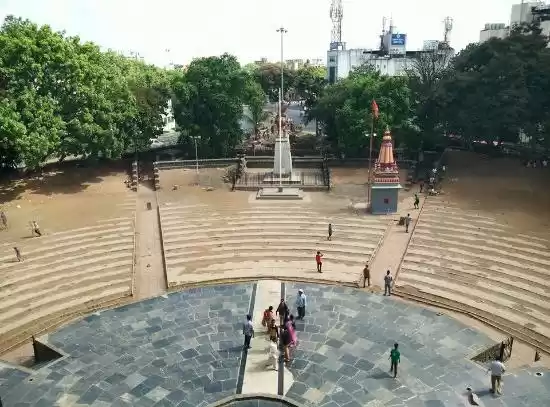
PUNE, the Cultural Capital of Maharashtra, is the second largest city in Maharashtra and the seventh most populous city in India. It is also known as the "OXFORD of the EAST" due to presence of numerous famous educational institutions and is one of the leading Information Technology (IT) Hub of the nation. Pune, which was once the seat of the Peshwas, the prime ministers of the Maratha Empire, is one of the fastest growing cities in the Asia-Pacific region. Once known as "Punavadi", this city situated on the Deccan Plateau displays great variety be it culture, history, sports, patriotism, nature or wildlife in spite of the urbanization factor. So, get set to take a tour of the "Punyanagari" - a city that has managed to have a perfect semblance between the old and new world.
Darshan - A Life Changing Experience, is a museum dedicated to the noted Saint and scholar, Sadhu Vaswani. A journey into Sadhu Vaswani's life and activities, it creates an entertaining, educative and moving experience for the soul, culminating in the darshan of the humble kutiya, where he spent his last years. The narrative and the dialogues, in the sound and light format, make it a very emotive experience; as opposed to the written format.
Timings: 10 AM to 6 PM except Thursdays
The Pataleshwar Cave Temple (also called Panchaleshvara or Bamburde) is a rock-cut cave temple, carved out in the 8th century in the Rashtrakuta period. Located on the Jangli Maharaj Road, this temple is devoted to the Lord Pataleshwar, the God of the Underworld. In front of the cave is a circular Nandi mandapa, its umbrella shaped canopy supported by massive square pillars. The main cave is rectangular on plan and has a pillared porch. There are three sanctums in the cave temple and the central one houses the Shivalinga. This is the oldest monument in Pune and is more than 1300 years old.
Timings: 8:30 AM – 5:30 PM
Shaniwarwada is a historical Fort in the city of Pune. It was built in the year 1732 and was seat to the Peshwas of the Maratha Empire until 1818 when they lost to the British East India Company after the third Anglo-Maratha War. The Shaniwar Wada was originally the seven-storied capital building. In 1773, Narayanrao, who was the fifth and ruling Peshwa then, was murdered by guards on orders of his uncle Raghunathrao and aunt Anandibai. A popular rumor says that Narayanrao's ghost still calls for help - "Kaka mala wachawa"(Uncle save me) on full moon nights. The fort itself was largely destroyed in 1828 by an unexplained fire but the remains are now maintained as a tourist attraction now.
Timings: 8 AM - 6:30 PM, Entry Fees: Rs. 5/- per head
Light and Sound Show - Timings: 7:15 PM - 8:10 PM (Marathi), 8:15 PM - 9:10 PM (English), Show Ticket: Rs. 25/- per head
The Lal Mahal (Red Palace) of Pune is one of the most famous monuments. In the year 1630 AD, Shivaji Maharaj's Father Shahaji Bhosale, established the Lal Mahal for his wife Jijabai and son. Shivaji grew up here, and stayed in the Lal Mahal till he captured the Torna fort in 1645. The Lal Mahal is famous for an encounter between Shivaji and Shaistekhan of the Mughal Army, where Shivaji cut off the later's fingers when he was trying to escape from the window of the Lal Mahal. The current Lal Mahal is a memorial holding a collection of large-size oil paintings based on the significant events in the life of Shivaji, a statue of Rajmata Jijabai, a carving depicting Shivaji using a gold plough along with Rajmata Jijabai, a fiber model of Raigad with horsemen and a huge map of Maharashtra indicating the forts of Shivaji.
Timings: 9 AM to 1 PM and 4 PM to 8 PM
Entry Fees: Rs. 3/- per head
Shreemant Dagdusheth Halwai Ganapati Temple in Pune is dedicated to the Hindu God Ganesh. The temple is quite popular in Maharashtra and is visited by thousands of pilgrims every year especially during the 10 Day Ganesh Festival. It was constructed by a Lingayat trader and Sweet maker - Dagdusheth Halwai (Gadve). The temple is a beautiful construction and boasts a rich history of over 125 years. It is built such that one can view the proceedings in the temple and the idol from outside as well. The idol is adorned with nearly 40 kilos of gold.
Timings: 6 AM - 9 PM
Raja Dinkar Kelkar Museum, constructed in 1920, contains the collection of Dr. Dinkar G. Kelkar, dedicated to the memory of his only son, Raja. The three-storey building houses various sculptures dating back to the 14th century and has a collection of more than 15000 objects. There are also ornaments made of ivory, silver and gold, musical instruments (a particularly fine collection), war weapons and vessels.
Timings: 10 AM - 5:30 PM
Entry Fees: Rs. 5/- per child, Rs. 20/- per adults
The Sarasbaug Temple houses the idol of Shri Siddhivinayak Gajanan (God who fullfils all the wishes). It was built by Shrimant Sawai Madhavrao Peshwa in 1784. A sacred ground of faith for millions of devotees in Pune and around the world, on an average the Sarasbaug temple is visited by about ten thousand devotees a day. The main shrine is surrounded by a lake filled with beautifully blossomed lotuses. The lake is bordered by lush green lawns on all sides which adds to the attraction of this place.
Timings: 5:30AM–8PM daily
Parvati Hill is the one of the most scenic locations in Pune. It is situated at a height of 2100 feet above sea level. The temples on Parvati hill are the oldest heritage structures in Pune and reminiscent of the Peshwa dynasty. It offers an aerial view of the city and for the Punekars, it is a respite from the noise and pollution of city life. One has to climb 103 steps to reach the top of the hill. There is one Devdeveshwar temple on the hill and other temples of Lord Kartikeya, Vishnu and Vitthal. Located on this hill is an interesting museum that commemorates the Peshwa rule. Near the museum is situated the Samadhi Sthan of Shrimant Nanasaheb Peshwa who took his last breath here.
Timings: 5AM–8PM daily
Blades of Glory is the biggest Cricket museum in the world. Spread over around 4,000 sq ft, Blades of Glory displays rarest of rare of cricket memorabilia. The artifacts include personally autographed cricket-related items by the masters of the gentleman’s game. A significant part of the museum is the room dedicated to batting maestro Sachin Tendulkar, which features most of cricketing accessories he has used over his long international career and 100 miniature bats dedicated to his ton of tons, each one of which bearing details of his 100 centuries in international cricket. The gallery also displays signed memorabilia by five triple centurions in Test cricket – Virender Sehwag, Michael Clarke, Mahela Jayawardene, Sanath Jayasuriya and Chris Gayle. If you are a die hard cricket fan, you will not want to miss this visual treat.
Timings: 10:30 AM - 7 PM
Entry Fees: Rs. 50/- per head
The Rajiv Gandhi Zoological Park, located in Katraj is a 130-acre zoo divided into three parts: an animal orphanage, a snake park, and a zoo. It also includes 42-acre of the Katraj Lake. The zoo has collections of reptiles, mammals, and birds. Among mammals, the zoo has a white tiger and a male Bengal tiger named Tanaji. Reptiles include Indian rock python, cobra, snakes, vipers, Indian crocodiles and Indian star tortoise. There are over 22 species of snakes that includes a 13-foot-long King Cobra.
Timings: 10:30 AM - 6 PM, except Wednesdays
Entry Fees: Rs. 3/- per head for Adults and Rs. 2/- per head for children
The Yashwantrao Chavan Udyan in Sahakarnagar area of Pune is the place where all the Seven Wonders of the World are brought together under one roof. It is an innovative thought to introduce common people to the beautiful wonders built round the world. The Park the visitors by 3D and 4D entertainment shows as well as the beautiful landscape and illumination.
Timings: 6 AM - 10 AM, 4 PM - 8 PM
Entry Fees: Rs. 20/- inclusive of 4D show
The Aga Khan Palace was built by Sultan Muhammed Shah Aga Khan III in Pune, India in the year 1892. The palace is closely linked to the Indian freedom movement as it served as a prison for Mahatma Gandhi, his wife Kasturba Gandhi, his secretary Mahadev Desai (All were interned from 9 August 1942 to 6 May 1944) and Sarojini Naidu. In 1969, Aga Khan Palace was donated to the Indian people by Aga Khan IV as a mark of respect to Gandhi and his philosophy. The palace has Italian arches and spacious lawns. It houses a number of photos and portraits depicting glimpses from the life of Mahatma Gandhi, the father of the nation of India, and other personalities of the Indian freedom struggle.
Timings: 9 AM to 6 PM
Entry Fees: Rs. 5/- for adults and Rs. 2/- for children
Located in Wanowrie, Shinde Chatri houses the Samadhi of Shrimant Mahadji Shinde. He was a man of great deeds. The Shiv mandir in the temple campus was built by Shrimant Mahadji in 1794. He passed away the same year and his last rites were performed at this very place. The temple campus including the Samadhi was later built by built by Madhavrao Sindhia in 1965. The temple has beautiful architectural designs and remains unaffected by the passage of years.It is maintained by Sindhia Devasthan Trust, Gwalior.
Timings: 6 AM to 9 PM
Entry Fees: Rs. 2/- per head
Vishrambaug Wada, a three-storeyed mansion with its famous entrance is another of Pune's attractions, which symbolizes and tells tales of Pune's rich culture and heritage. It was the luxurious residence of Peshwa Bajirao II, the last Peshwa of Maratha confederacy, in early nineteenth century. The 20,000 sq. ft. wada presently houses a post office on its ground floor, a few other offices of the municipal corporation and a small museum of Maratha artifacts put together by noted Maratha historian, Babasaheb Purandare.
Timings: 10AM–7PM
Entry Fees: Rs. 5/- per head
The Chattushrungi Temple, a Hindu temple is said to have been built during the reign of the Maratha king Shivaji. Chattushringi (Chattu means four) is a mountain with four peaks. The Chattushringi temple is 90 feet high and 125 feet wide and is a symbol of power and faith. One has to climb more than 100 steps to reach the shrine of Goddess Chattushringi. The temple is visited by lakhs of visitors every year during the annual Navratri festival. The legend behind this temple is that there was a rich and prosperous merchant named Durlabhsheth Pitambardas Mahajan who was an ardent believer of Goddess Saptashrungi Devi. When he became old and couldn't visit her temples, the Goddess appeared in his dream and told him- "If you can not come to me, I will come to you & stay near you." She asked him to come to this hill and dig there. A miracle happened as he found a natural statue of goddess (Swayambhu devi) and constructed a temple here.
Timings: 6 AM - 9 PM
The National War Museum was built in 1997 as a memorial for Indian soldiers who sacrificed their lives for the nation. It was established by citizens of Pune under the Express Citizen Forum which established the War Memorial Fund. The museum is situated in Pune Cantonment and has been opened up for the public since 1998. It is made up of pillars and spreads across 25 feet of land. The major attraction of the museum is MIG 23 BN Jet Fighter which was used during the Kargil War. The museum showcases arms, uniforms and personal mementos which were given as a scottish contribution to the British Army. A replica of the now decommissioned frigate INS Trishul, which served in the Liberation of Goa and the Indo-Pakistani War of 1971, is also on display.
Timings: 9 AM - 5:30 PM
Pune-Okayama Friendship Garden or Pu La Deshpande Udyan is one of the largest gardens located on Sinhagad Road in Pune and was built in inspiration of 300-year-old Okayama's Kōraku-en Garden. It contains natural flow of water from canal which is been spread across the garden. You can see colourful fishes from a small bridge in the center of garden. The phase 2 of this garden is known as Mughal Garden and is a replica of the Mughal garden in Rashtrapati Bhavan, New Delhi.
Timings: 6 AM - 10:30 PM, 4 PM - 8 PM
Entry Fees: Rs. 5/- per head
Mr. B. S. Joshi, known to all as Bhau Joshi, was the originator and founder of the Joshi's Museum of Miniature Railways. Collecting train models was his hobby, or rather his obsession, from childhood. The model trains on exhibition run through a miniature city and are presented with a son et lumière show. The layout includes 65 signals, fences, lamp posts, flyovers, etc. and can be controlled manually as well as through a computer. It has working models of "10 - 15" types of trains, including steam engines, the bullet train and a mini sky-train. In 2007, it manufactured a scale model of the Jungfrau Railway, Europe's highest railway, and received an order for 2000 sets, which will be sold at the stations of the railway.
Timings: Vary based on the day - 9:30 AM - 5 PM
Entry fees: Rs. 90/- per head
The Gram Sanskruti Udyan, known as Pune’s first mock village, is located near Someshwar Temple in Someshwar Wadi , Pashan. The park gives an up close and personal look into the village life through a display of more than 700 statues, water filled wells, animals and farms. It takes people back to the rustic charm of village life and also introduces them to the concepts of farming and various other rural occupations, barter system and gram panchayat. Really worth visiting with the whole family , especially kids!
Timings: 10 AM - 9 PM
Entry Fees: Rs. 50/-
In addition to the above, do not forget to taste the famous Misal Paav in this historic city. You can visit Pune any time round the year except a couple of months in the monsoon season (July - August).
Frequent searches leading to this page:
international honeymoon packages from mumbai, budget hotel at pune near railway station, places to visit in pune maharashtra, pune trip plan, weekend getaways from pune within 100 kms, things to do pune today












































































